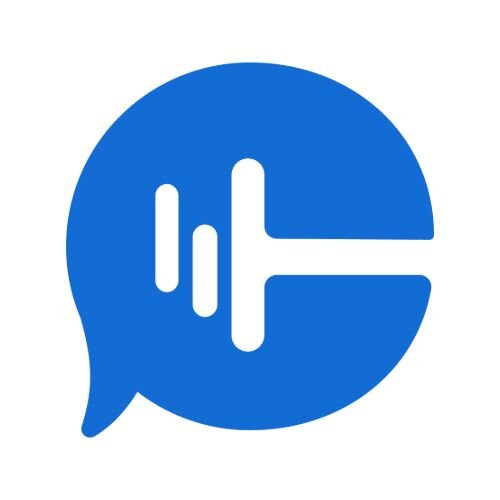If you waited until the last possible moment to make the move from Google’s Universal Analytics to Google Analytics 4 (GA4), you’re around 9 months into the change. For some users, that period has been a bumpy ride.
The two website performance analytics models work differently, meaning marketers had to grapple with setting up client accounts correctly. Even industry experts said starting out with GA4 was, “uncomfortable, to say the least.” Also, it’s not often that a platform has to apologize to advertisers for the experience around updating its tools.
So, how are agencies doing with the switch? What’s gone wrong, what’s still challenging, what’s gone well, and how can it be better? Here’s a look at what many agencies are experiencing, as well as steps you can take to improve your analytics moving forward.
The reviews are in on GA4
For many agencies, the switch to GA4 caused some confusion and frustration. Marketers needed to adapt to a different method of data collection and the way interactions are represented in the tool.
In Universal Analytics, events were broken down by category, action, and label. However, in GA4, “every “hit” is an event,” and that was a major adjustment for some users. Others were frustrated with inexplicable changes, like the inability to use CTRL-C to copy within GA4 reports. Users have had to find workarounds like developing extensions to add the copy shortcut.
CallRail community members struggled with integration problems, missing events, difficulty finding information, events not recording as intended, and more.
The agency lowdown
With confusion over the switch, agencies have also had to contend with clients who didn’t set up GA4 correctly. For example, one CallRail customer discovered data duplication caused by dual integrations between Google and CallRail. “I noticed that the client has the native integration set up through the CallRail platform AND they have it set up through GTM [Google Tag Manager] as well.”
Overall, agencies have been adapting to the new analytics tool. One particular bright spot in the switch from Universal Analytics to GA4 is that the reporting interface has changed to make it easier to customize reports. Users are able to choose from a variety of reporting templates or customize their own dashboards and reports.
While reports may look different, users retain essentially the same reporting capabilities, with some new ones added. One additional benefit is that GA4 allows mobile app tracking via the Google Analytics for Firebase SDK. Marketers can easily see data about user behavior and app performance in the same place they view website analytics.
Integration challenges
Setup and integration challenges were some of the most common issues in the initial transition to GA4.
One CallRail user explained, “A hurdle we are experiencing is that CallRail conversions do not seem to integrate with default channel groupings in GA4 and all show up under (Unassigned) within the Traffic Acquisition report.”
Google did not provide the necessary attribution fields, meaning users need to send data as a custom parameter. Some users and platforms resorted to creating their own integration workarounds and shortcut tools. For example, CallRail had to add a new configuration to support common customer uses like sending calls from first-time callers v. repeat callers as separate events to GA4.
Quick guide to using GA4 features
GA4 collects data from your apps and websites to give you insights into what your customers are doing. By understanding the features, you can help your clients get more from the tool.
Here are some of GA4’s top capabilities:
- Integrates with media platforms like Google Ads and Salesforce Marketing Cloud to give you a broader range of insights.
- Centralizes website and app data by allowing you to simultaneously analyze multiple data streams, including those from the web, iOS, and Android.
- Automatically highlights insights through the use of artificial intelligence and machine learning.
- Provides predictive analytics like predicted revenue, purchase probability, and churn probability.
- Offers privacy controls like cookieless measurement and machine learning-based modeling to fill in data gaps.
- Simplifies basic event and conversion tracking and tracks events in real time.
- Allows customized reports as well as report navigation to more closely align with client goals.
Proper GA4 setup and integrations are key to getting a clear picture of both online and offline sources. It’s also essential to collect the right data and set up reports in ways that will be most useful for your clients.
Integrating CallRail with Google Analytics allows for better insights into who is visiting your site, what drove them there, actions they take on your site, and what steps they take before and after a call. You get a better understanding of the correlation between phone calls and site visits.
Analyzing data with or without GA4
If you are struggling to get the hang of GA4 and want to look into alternative and complementary tools, here are a few analytics solutions, including several that are our integration partners:
- Looker is a self-service business intelligence platform that integrates with other Google Cloud solutions.
- Adobe Analytics provides insights into conversions made both online and offline, including hard-to-track channels.
- Databox lets you see metrics from a variety of sources to get a big-picture view of marketing performance.
- Agency Analytics makes it easy to automate reports, customize dashboards, and analyze call tracking campaigns.
- Converge combines Call Tracking data with social media and other digital campaigns data so you can see the full impact of your marketing.
- Octoboard integrates CallRail data with information from web analytics and other marketing tools.
- ReportGarden allows you to view client Call Tracking and ad campaign analytics on a real-time dashboard, while giving clients access to their own portals.
- Ruler Analytics helps connect data from both sales and marketing, including form and call tracking.
- NinjaCat consolidates call tracking with your other marketing analytics data to provide more comprehensive marketing reporting.
- SmartBi centralizes data from CallRail and other digital channels for simplified viewing and decision-making.
- Swydo unifies CallRail, SEO, PPC, and social media data to easily create reports and share them with clients.
- tapClicks funnels data from your campaigns and other marketing efforts into a single dashboard, with custom views and automated reporting.
Want to learn more about GA4?
GA4 can be a valuable analytics tool for you and your clients in 2024. There is a learning curve, though, especially when it comes to optimizing GA4 for each client.
Here are resources to help you learn more and be confident in your ability to get the best results for your clients.
- CallRail: A guide to Google Analytics 4 for marketing agencies
- CallRail: GA4 Bootcamp Video Series - Become a Google Analytics 4 expert
- Optimize Smart: Google Analytics 4 Resources
- MarTech: Google Analytics 4 Resources
- Google: Google Analytics 4 account training guide and support










%22%2C%22Id%22%3A%2232%22%7D%2C%22Var%22%3A%7B%22Name%22%3A%22Website%22%2C%22Id%22%3A%221%22%7D%2C%22U%22%3A%22D80DCE8655C683C04940E97AC5CFC5E8B%22%7D%2C%7B%22Exp%22%3A%7B%22Name%22%3A%22Clicks%20start%20free%20trial%20(home%20page)%22%2C%22Id%22%3A%2233%22%7D%2C%22Var%22%3A%7B%22Name%22%3A%22Website%22%2C%22Id%22%3A%221%22%7D%2C%22U%22%3A%22D80DCE8655C683C04940E97AC5CFC5E8B%22%7D%2C%7B%22Exp%22%3A%7B%22Name%22%3A%22Signups%22%2C%22Id%22%3A%2242%22%7D%2C%22Var%22%3A%7B%22Name%22%3A%22Website%22%2C%22Id%22%3A%221%22%7D%2C%22U%22%3A%22D80DCE8655C683C04940E97AC5CFC5E8B%22%7D%2C%7B%22Exp%22%3A%7B%22Name%22%3A%22Homepage%20Trial%20Clicks%22%2C%22Id%22%3A%2284%22%7D%2C%22Var%22%3A%7B%22Name%22%3A%22Website%22%2C%22Id%22%3A%221%22%7D%2C%22U%22%3A%22D80DCE8655C683C04940E97AC5CFC5E8B%22%7D%2C%7B%22Exp%22%3A%7B%22Name%22%3A%22Sitewide%20Trial%20Clicks%22%2C%22Id%22%3A%2285%22%7D%2C%22Var%22%3A%7B%22Name%22%3A%22Website%22%2C%22Id%22%3A%221%22%7D%2C%22U%22%3A%22D80DCE8655C683C04940E97AC5CFC5E8B%22%7D%2C%7B%22Exp%22%3A%7B%22Name%22%3A%22Pricing%20Trial%20Clicks%22%2C%22Id%22%3A%2286%22%7D%2C%22Var%22%3A%7B%22Name%22%3A%22Website%22%2C%22Id%22%3A%221%22%7D%2C%22U%22%3A%22D80DCE8655C683C04940E97AC5CFC5E8B%22%7D%5D%7D&_biz_u=1167ad9e722848c09b3f519f28066cf9&_biz_l=https%3A%2F%2Fwww.callrail.com%2Fblog%2Fga4-for-agencies-good-bad-ugly&_biz_t=1742935284303&_biz_i=GA4%20for%20agencies%3A%20The%20good%2C%20the%20bad%20and%20the%20ugly&_biz_n=1&rnd=422584&cdn_o=a&_biz_z=1742935284304)
